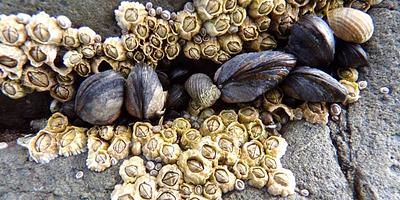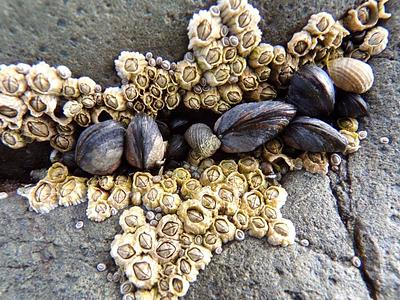
Common Mussel
Mytilus edulis
What do they look like?
Mussels are bivalves, meaning they have a pair of shells clamped together. Dark bluish or purplish in colour and up to 100mm in length, mussels are almost triangular in shape but with curved edges and are not symmetrical. Concentric lines can be seen on the shell surfaces.
Where can I see them in Scotland?
Very common all around the Scottish coasts, mussels often occur in thousands covering rocks to the exclusion of other species. The largest individuals are found in deeper water and are often collected for food. Large, dense mussel beds can form that cover the seabed, with each mussel attaching itself to the seabed and each other using sticky fibres called byssus threads.

